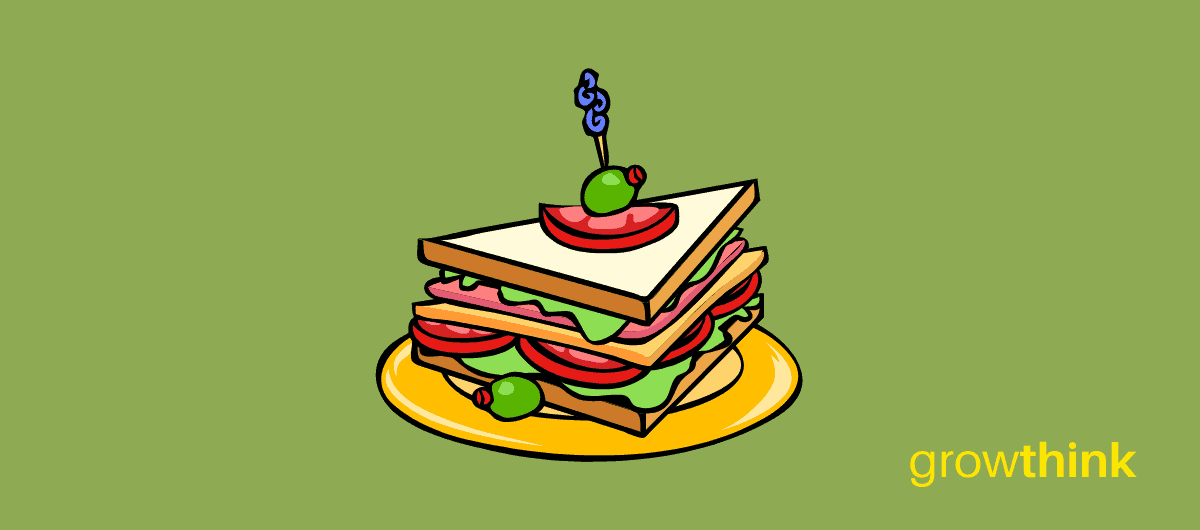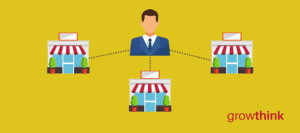Sandwich Shop Business Plan
Over the past 20+ years, we have helped over 10,000 entrepreneurs and business owners create business plans to start and grow their sandwich shop businesses. On this page, we will first give you some background information with regards to the importance of business planning. We will then go through a sandwich shop business plan template step-by-step so you can create your own business plan today.
What is a Sandwich Shop Business Plan?
A business plan provides a snapshot of your sandwich shop business as it stands today, and lays out your growth plan for the next five years. It explains your business goals and your strategy for reaching them. It also includes market research to support your plans.
Why You Need a Business Plan for a Sandwich Shop
If you’re looking to start a sandwich shop business, or grow your existing sandwich shop business, you need a business plan. A business plan will help you raise funding, if needed, and plan out the growth of your sandwich shop business in order to improve your chances of success. Your sandwich shop business plan is a living document that should be updated annually as your company grows and changes.
Sources of Funding for Sandwich Shop Businesses
With regards to funding, the main sources of funding for a sandwich shop business are personal savings, credit cards, bank loans and angel investors. With regards to bank loans, banks will want to review your business plan and gain confidence that you will be able to repay your loan and interest. To acquire this confidence, the loan officer will not only want to confirm that your financials are reasonable, but they will also want to see a professional sandwich shop business plan. Such a plan will give them the confidence that you can successfully and professionally operate a business.
Personal savings is the other most common form of funding for a sandwich shop business. Venture capitalists will usually not fund a sandwich shop business. They might consider funding a sandwich shop business with a national presence, but never an individual location. This is because most venture capitalists are looking for millions of dollars in return when they make an investment, and an individual location could never achieve such results. With that said, personal savings and bank loans are the most common funding paths for sandwich shop businesses.
Finish Your Business Plan Today!
If you’d like to quickly and easily complete your business plan, download Growthink’s Ultimate Business Plan Template and complete your plan and financial model in hours.
How to Write a Business Plan For a Sandwich Shop
If you want to start a sandwich shop business or expand your current one, you need a business plan. The sandwich shop business plan template below details what should be included in each key section of your business plan.
Executive Summary
Your executive summary provides an introduction to your business plan, but it is normally the last section you write because it provides a summary of each key section of your business plan.
The goal of your Executive Summary is to quickly engage the reader. Explain to them the type of sandwich shop business you are operating and the status. For example, are you a startup, do you have a sandwich shop business that you would like to grow, or are you operating a chain of sandwich shop businesses?
Next, provide an overview of each of the subsequent sections of your sandwich shop business plan. For example, give a brief overview of the food industry. Discuss the type of sandwich shop business you are operating. Detail your direct competitors. Give an overview of your target customers. Provide a snapshot of your marketing plan. Identify the key members of your team. And offer an overview of your financial plan.
Company Analysis
In your company analysis, you will detail the type of sandwich shop business you are operating.
For example, you might operate one of the following types of sandwich shop businesses:
- Sub Sandwich Shop: this type of sandwich shop business focuses on offering sandwiches with a variety of meats, cheese and fixings (lettuce, tomato, etc.), allowing the customer to customize their own.
- Specialty Sandwich Shop: this type of business focuses on sandwiches with specific and set ingredients. Sandwich selections usually include hot and cold options hot and cold options and can include options like California Club, Philly Cheesesteak or a Fresh Mozzarella Panini
- Food Truck: this type of sandwich shop business serves a selection of sandwich options from a food truck. The truck often travels throughout a specific city or town throughout the day or week.
In addition to explaining the type of sandwich shop business you will operate, the Company Analysis section of your sandwich shop business plan needs to provide background on the business.
Include answers to question such as:
- When and why did you start the business?
- What milestones have you achieved to date? Milestones could include the number of customers served, number of positive reviews, amount of monthly revenue, etc.
- Your legal structure. Are you incorporated as an S-Corp? An LLC? A sole proprietorship? Explain your legal structure here.
Industry Analysis
In your industry analysis, you need to provide an overview of the food industry. While this may seem unnecessary, it serves multiple purposes.
First, researching the industry educates you. It helps you understand the market in which you are operating.
Secondly, market research can improve your strategy, particularly if your research identifies market trends.
The third reason for market research is to prove to readers that you are an expert in your industry. By conducting the research and presenting it in your business plan, you achieve just that.
The following questions should be answered in the industry analysis section of your sandwich shop business plan:
- How big is the industry (in dollars)?
- Is the market declining or increasing?
- Who are the key competitors in the market?
- Who are the key suppliers in the market?
- What trends are affecting the industry?
- What is the industry’s growth forecast over the next 5 – 10 years?
- What is the relevant market size? That is, how big is the potential market for your sandwich shop business? You can extrapolate such a figure by assessing the size of the market in the entire country and then applying that figure to your local population.
Customer Analysis
The customer analysis section of your sandwich shop business plan must detail the customers you serve and/or expect to serve.
The following are examples of customer segments: working professionals, families, teenagers and businesses.
As you can imagine, the customer segment(s) you choose will have a great impact on the type of sandwich shop business you operate. Clearly, individuals looking for a quick meal would respond to different marketing promotions than a large corporate event in need of catering, for example.
Try to break out your target customers in terms of their demographic and psychographic profiles. With regards to demographics, include a discussion of the ages, genders, locations and income levels of the customers you seek to serve. Because most sandwich shop businesses primarily serve customers living in their same city or town, such demographic information is easy to find on government websites.
Psychographic profiles explain the wants and needs of your target customers. The more you can understand and define these needs, the better you will do in attracting and retaining your customers.
Finish Your Sandwich Shop Business Plan in 1 Day!
Don’t you wish there was a faster, easier way to finish your business plan?
With Growthink’s Ultimate Business Plan Template you can finish your plan in just 8 hours or less!
Click here to finish your Sandwich Shop business plan today.
Competitive Analysis
Your competitive analysis section of your sandwich shop business plan should identify the indirect and direct competitors your business faces and then focus on the latter.
Direct competitors are other sandwich shop businesses.
Indirect competitors are other options that customers have to purchase from that aren’t direct competitors. This includes restaurants, fast food establishments and grocery stores. You need to mention such competition as well.
With regards to direct competition, you want to describe the other sandwich shop businesses with which you compete. Most likely, your direct competitors will be sandwich shops located very close to your location.
For each such competitor, provide an overview of their businesses and document their strengths and weaknesses. Unless you once worked at your competitors’ businesses, it will be impossible to know everything about them. But you should be able to find out key things about them such as:
- What types of sandwiches do they sell?
- What is their pricing?
- What are their weaknesses?
- Do they deliver?
- Do they offer other things such as chips, drinks, sweets, etc.?
- Do they offer a rewards program for returning customers?
With regards to the last two questions, think about your answers from the customers’ perspective. And don’t be afraid to ask your competitors’ customers what they like most and least about them.
The final part of your competitive analysis section is to document your areas of competitive advantage. For example:
- Will you serve specific sandwiches or give the customer the option to create their own?
- Will you offer a rewards program for returning customers?
- Will you offer delivery?
- Will you provide better customer service?
- Will you offer better pricing?
Think about ways you will outperform your competition and document them in this section of your sandwich shop business plan.
Marketing Plan
Traditionally, a marketing plan includes the four P’s: Product, Price, Place, and Promotion. For a sandwich shop, your marketing plan should include the following:
Product: In the product section, you should reiterate the type of sandwich shop company that you documented in your Company Analysis. Then, detail the specific products you will be offering. For example, in addition to a sandwich shop, will you offer a catering service for large group events?
Price: Document the prices you will offer and how they compare to your competitors. Essentially in the product and price sub-sections of your marketing plan, you are presenting the services you offer and their prices.
Place: Place refers to the location of your sandwich shop company. Document your location and mention how the location will impact your success. For example, is your sandwich shop business located in a busy retail district, shopping plaza, mall, etc. Discuss how your location might be the ideal location for your customers.
Promotions: The final part of your sandwich shop marketing plan is the promotions section. Here you will document how you will drive customers to your location(s). The following are some promotional methods you might consider:
- Advertising in local papers and magazines
- Reaching out to local websites
- Flyers
- Social media marketing
- Local radio advertising
Finish Your Business Plan Today!
If you’d like to quickly and easily complete your business plan, download Growthink’s Ultimate Business Plan Template and complete your plan and financial model in hours.
Operations Plan
While the earlier sections of your sandwich shop business plan explained your goals, your operations plan describes how you will meet them. Your operations plan should have two distinct sections as follows.
Everyday short-term processes include all of the tasks involved in running your sandwich shop business, including counting inventory, restocking/order inventory, making sandwiches, fulfilling online orders and shop maintenance.
Long-term goals are the milestones you hope to achieve. These could include reaching $X in revenue or expanding your sandwich shop to another location.
Management Team
To demonstrate your sandwich shop business’ ability to succeed, a strong management team is essential. Highlight your key players’ backgrounds, emphasizing those skills and experiences that prove their ability to grow a company.
Ideally you and/or your team members have direct experience in managing sandwich shop businesses. If so, highlight this experience and expertise. But also highlight any experience that you think will help your business succeed.
If your team is lacking, consider assembling an advisory board. An advisory board would include 2 to 8 individuals who would act like mentors to your business. They would help answer questions and provide strategic guidance. If needed, look for advisory board members with experience in managing restaurants or successfully running small businesses.
Financial Plan
Your financial plan should include your 5-year financial statement broken out both monthly or quarterly for the first year and then annually. Your financial statements include your income statement, balance sheet and cash flow statements.
Income Statement
An income statement is more commonly called a Profit and Loss statement or P&L. It shows your revenues and then subtracts your costs to show whether you turned a profit or not.
In developing your income statement, you need to devise assumptions. For example, will you restock your inventory once per week or twice per month? And will sales grow by 2% or 10% per year? As you can imagine, your choice of assumptions will greatly impact the financial forecasts for your business. As much as possible, conduct research to try to root your assumptions in reality.
Balance Sheets
Balance sheets show your assets and liabilities. While balance sheets can include much information, try to simplify them to the key items you need to know about. For instance, if you spend $50,000 on building out your sandwich shop business, this will not give you immediate profits. Rather it is an asset that will hopefully help you generate profits for years to come. Likewise, if a bank writes you a check for $50,000, you don’t need to pay it back immediately. Rather, that is a liability you will pay back over time.
Cash Flow Statement
Your cash flow statement will help determine how much money you need to start or grow your business, and make sure you never run out of money. What most entrepreneurs and business owners don’t realize is that you can turn a profit but run out of money and go bankrupt.
In developing your Income Statement and Balance Sheets be sure to include several of the key costs needed in starting or growing a sandwich shop business:
- Location build-out including design fees, construction, etc.
- Cost of equipment and supplies
- Payroll or salaries paid to staff
- Business insurance
- Taxes and permits
- Legal expenses
Appendix
Attach your full financial projections in the appendix of your business plan along with any supporting documents that make your plan more compelling. For example, you might include your sandwich shop location lease or blueprints of the shop’s interior design plan.
Summary
Putting together a business plan for your sandwich shop is a worthwhile endeavor. If you follow the template above, by the time you are done, you will truly be an expert. You will really understand the sandwich shop industry, your competition, and your customers. You will have developed a marketing plan and will really understand what it takes to launch and grow a successful sandwich shop business.
Finish Your Sandwich Shop Business Plan in 1 Day!
Don’t you wish there was a faster, easier way to finish your Sandwich Shop business plan?
With Growthink’s Ultimate Business Plan Template you can finish your plan in just 8 hours or less!
Click here to finish your Sandwich Shop business plan today.
OR, Let Us Develop Your Plan For You
Since 1999, Growthink has developed business plans for thousands of companies who have gone on to achieve tremendous success.
Click here to see how Growthink’s professional business plan consulting services can create your business plan for you.


 Small Business Plan Template
Small Business Plan Template How To Write A Great Business Plan
How To Write A Great Business Plan Franchise Business Plan
Franchise Business Plan